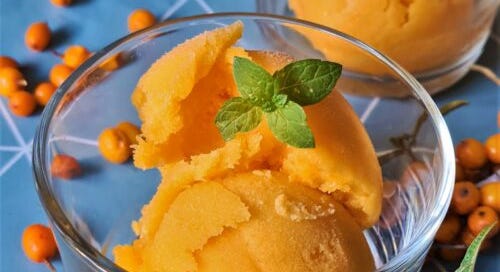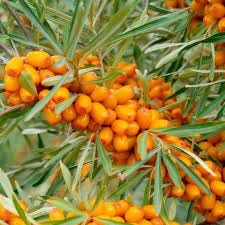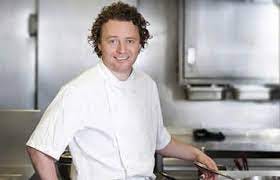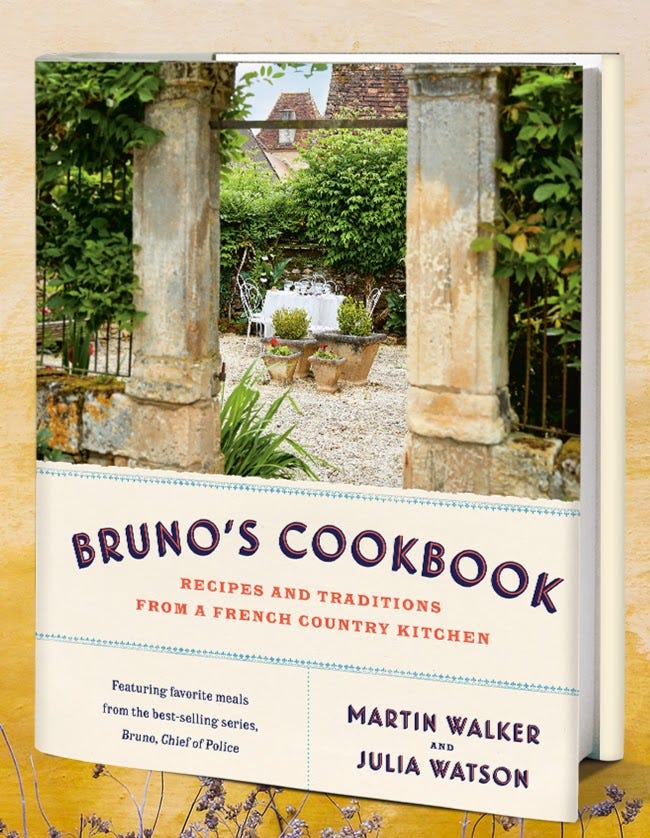One of the most obscure words I know in any language is the Russian for sea buckthorn: облепиха - oblepikha. Sea buckthorn isn’t exactly widely known in English either.
Every foreign correspondent arriving to work in the then Soviet Union was obliged to employ staff provided by the Foreign Ministry. For an office, these would be the secretaries and ‘shaffures’ (just say it aloud) because the authorities didn’t want wayward, over-curious foreign correspondents driving themselves about poking their noses into anything they liked. I was the only correspondent allowed to drive my car myself, presumably dismissed as no kind of threat. Huh!
Living accommodation wasn’t exempt. There, the choice was: cleaner or cook.
It will come as no surprise that all these trained staff were KGB-operatives. Valentina was our home-installed informer, ruling over the miniscule, heavily bugged apartment. We loved her. A sturdy Siberian in her late fifties, well at ease with her majestic self, she gave withering lip to the shaffures standing shivering by their running engines each morning, waiting for their bosses to emerge. Very soon after my arrival in Moscow, she summoned me with a hooked forefinger, the other one held rigid against her lips, downstairs to stride briskly around the snow-banked block beyond our fenced-in compound. “I know, Gospozha (madam), that you know I must report on your activities and who you see. I want you to understand that I shall do the minimum I can get away with.”
She was a woman of great courage and great generosity, with a penchant for vermilion lipstick and colourful knitted leg warmers she requested from London and pushed down around her ankles. She had an even greater penchant for the shaffures who jostled like fruit flies round her kitchen stool. When I caught a cold, she insisted upon rubbing goose fat over my chest and the soles of my feet. She taught me how to make pierogies and pelmeni. And all about sea buckthorn.
Given how rabidly the developed world falls upon every promising natural health product, it’s surprising manufacturers in the ‘wellness’ market don’t seem to know about sea buckthorn. After all, they’ve foisted upon us every manner of previously unheard of natural booster, from chia seeds to goji berries and more.
Sea buckthorn berries, their sunset orange making them beloved of gardeners who turn them into hedging, are exceptionally rich in antioxidants and high in vitamins C and A, as well as lipids. According to Valentina and her ancestors and some internet studies, sea buckthorn oil, which also contains sterols, is good for the hair, for use as a moisturizer, to improve the skin’s elasticity, and - here Valentina was exceptionally enthusiastic - postmenopausal vaginal dryness. But while my grasp of Russian could grapple correctly with the four different uses of the verb ‘to go’, it wasn’t good enough for me to understand just how the berries should be applied in this regard if it became necessary. As if all this were not thrilling enough, sea buckthorn also inhibits appetite. Beat that, acai berries!
I’m not urging you to rush out and lay in stocks as a health benefit. As with any medical intervention from Nature or Big Pharma, you should seek professional advice before putting your hopes and health in sea buckthorn. But like other autumn berries, sea buckthorn can be made into delicious jam, pie filling, sauces, and juice.
Sea buckthorn berries grow along the sea coasts and on sand dunes in cool climates from Northern and Central Europe to Canada. Introduced to the US in 1923, sea buckthorn is hardy to USDA zone 3. It’s a highly prolific and very prickly bush. In London where it makes a popular hedge, I’ve knocked on neighbourhood doors and asked if I might pick the berries. Though surprised by the request, people were generous, and I was allowed to help myself.
To make a tangy, tart juice with an edge of fruity sweetness, wash the berries then turn them into a puree with a hand blender or in a food processor. Press the puree through a fine sieve to remove the seeds and get every last drop of juice. Add sugar or honey to taste and to control what can be astringent and stir till melted. You can also cook it, although it will fill the air with a bit of a sickly smell that doesn’t transfer to the juice. To drink, dilute to taste with water.
Six months after opening The Kitchin in 2006 down on Edinburgh’s waterfront in Leith, cherubic Tom Kitchin was awarded his first Michelin star, at 29 years old. A short time later, I interviewed him for Gourmet Magazine and he sat me down in a corner of the kitchen and fed me and fed me and fed me.
The eventual palate cleanser (a concept to allow for yet more greed) was sea buckthorn sorbet. A scoop of it nestled on the plate like a spoonful of harvest moon. I’d never seen anything edible that colour - apricot infused with coral. The flavour was sharp and refreshing, yet mellow. Another element in sea buckthorn is malic acid, the source of sourness in ‘extreme candy’ like Sour Punch candies, Sweet Tarts, also in Salt &Vinegar Crisps. The Kitchin uses sea buckthorn in another dessert, a panna cotta with a centre layer of sea buckthorn jelly and surrounded with what Tom calls Sea buckthorn consommé. To make this is simple.
100ml/7 tablespoons sea buckthorn juice
100ml/7 tablespoons simple syrup (equal quantities sugar to water brought to the boil, the sugar melted, then the syrup cooled)
Lemon juice to taste
To turn it into jelly, just soak 1½ leaves/a sachet of gelatin in water till soft and stir it into 285ml/¼ pint warm consommé and leave to set.
To make sea buckthorn sorbet is also easy. And you don’t need a machine.
450g/1lb sea buckthorn berries
285g/10oz sugar
150ml/5fl oz water
2 egg whites
Stew the fruit with the sugar and water over medium heat under it has softened, 15-20 minutes. Don’t worry about the sickly smell. It won’t transfer.
Cool and and blitz to a puree in a processor or blender then thoroughly press through a sieve to extract the juice. Pour the juice into a freezer-going container and freeze till the puree is firm but not rock-solid, forking the edges into the centre every half hour or so once it’s begun to solidify, 3-4 hours.
Beat the egg whites in a large bowl with an electric whisk till stiff. Now, at medium speed, very gradually, spoonful by spoonful, add the frozen puree to the egg foam till it turns into a snow of fruit sorbet. Pack into a lidded container and refreeze.








Superb! Delicious recipes for sea buckthorn! I'm going to be getting one for the garden, as I'm so near the sea. In Schleswig-Holstein, they make a liqueur from the berries - a bit sweet for my taste, though if it's served ice-cold, it cuts the sweetness a bit.
I have been looking forward to the book for a long time. If my German were more servicable I would have gotten it! Sorry, I can't spell servicable.!